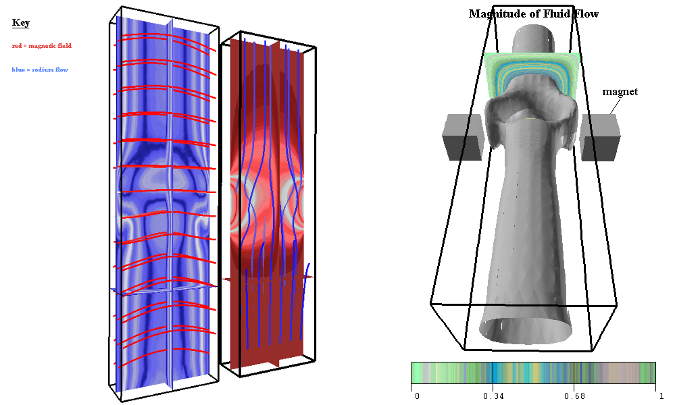Physically Coupled Systems
Physically coupled systems are common, for example the flow of air is dependent on temperature and pressure. There may be feedback between each variable making the system very difficult to understand. Simulations are often created as 'steady state' representations of a physical system as this reduces the impact of feedback. However in visualization it is important that the visualizer understands the relationship between all varying parameters and makes sure that these are made clear to the user. This can be challenging when the variables are connected to complex 3D geometries.
Magnetohydrodynamics
Magnetohydrodynamics studies the behaviour of electrically conducting fluids under the influence of magnetic fields. This example is of a full FEA simulation of the 3D steady state flow of a charged fluid in an insulated duct to which magnets are applied. Applications include metal forming processes, monitoring of coolant flow in nuclear reactors, plasma containment for fusion research and astrophysics. Here the flow of the fluid is affected by the magnetic field while at the same time the magnetic field is affected by the flow. It is important that the visualizations show both of the coupled physical processes, the expected features of the model and any that were not expected. This work was developed for a paper and won second prize in the UK NetViz 2006 visualization competition.

The image on the left shows two instances of the same duct rendered side by side to show the coupled physics. The duct on the left shows the sodium flow as orthoslices and magnetic flow as flow lines while the duct on the right shows the magnetic flow as orthoslices and the magnetic flow as flow line. The image in the right shows an isosurface of the flow of sodium. The flow is in steady state and has been divided into 2 jet streams by the magnets.
Last updated by Joanna Leng on the 23rd of August 2011.
